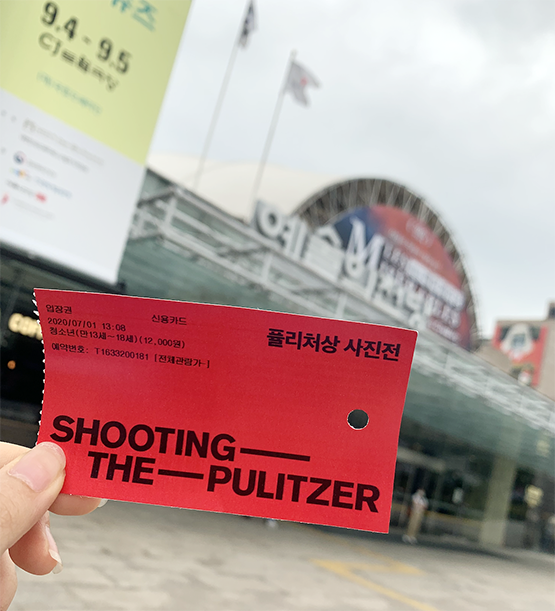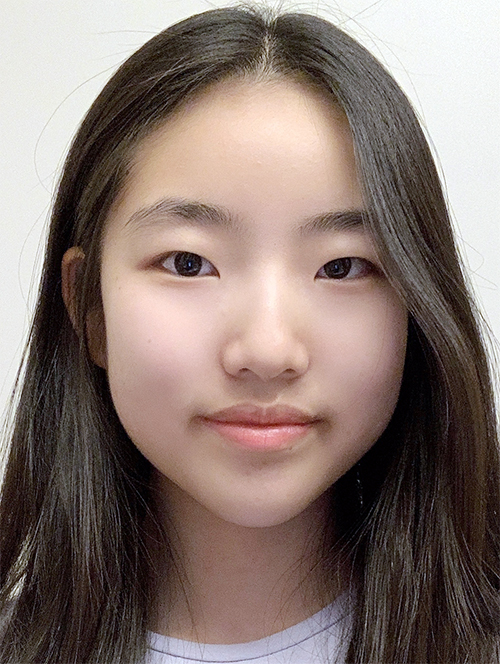“If we journalists don’t sing their song, who will?”
The Pulitzer Prize started with Joseph Pulitzer, a newspaper publisher, when he donated around $250,000 to Columbia University to create a journalism school and establish the Prize. After his death, the first Pulitzer Prizes were awarded in 1917 in categories such as the best editorial writing and the best book on American history. The categories for the Prize have now expanded to include music, cartooning, and audio reporting.
Following three exhibitions in 1998, 2010, and 2014, Shooting The Pulitzer which recorded a cumulative audience of around 500,000 has returned to Korea. The photo exhibition held at the Hangaram Design Museum from July 1st to October 18th features all award-winning photographs since 1942.

Starting from the entrance, big LED screens captured my eyes as they displayed the award-winning photos. After passing a small hall, I was able to see 140 photographs in chronological order starting from the 1940s. Each photo had a short description next to it that briefly mentioned the story and background behind the photo, when it was awarded the Prize, and by whom the photo was taken by.
Most of the photos were black and white because they were taken on film cameras and I think this contributed to creating a more serious mood and helped the audience to focus on not only the photo, but also the setting of which it was taken. Color started showing up around the 1980s where winning photos were less about history and war, but rather about self-expression and human rights. One of the early photos was entitled the “Flight of Refugees Across Wrecked Bridge in Korea,” which is a photo of North Korean refugees crossing the Daedong bridge to flee to the South. The bridge has been previously explored by the UN forces to stop Chinese and North Korean troops from crossing over. For Koreans, the Korean war always has a special part in their hearts because so many were people sacrificed in the war against the same race due to ideology and the war is practically still not over. Looking at this photo reminded me of the painful past and sacrificed hidden behind the prospering country.

Another image that caught my eye was a photograph taken by Reuters’ photographers that won the Breaking News award in 2019. Taken by Kim Kyung-hoon, the first South Korean photographer to win a Pulitzer Prize in photography, shows a photo of a Honduran woman named Maria Meza and her five-year-old twin daughters running away from tear gas while attempting to cross the border between Tijuana and San Diego on November 25th last year. The series of photographs also include scenes of despair as a child cries from excessive heat and humidity in a caravan and misery as a rooster passes by a dead body. These photos show the striking reality of the migrants as they hope for a better life in a new land. The jury of the Pulitzer committee recognized the photographs as “a vivid and startling visual narrative of the urgency, desperation and sadness of migrants.”
In order to take this photo, the photographer had been with the migrants for over 700 miles of their journey as he captured moments of the suffering of migrants as they headed towards the United States. As thousands of migrants tried to enter the San Ysidro Land Port of Entry, two men tried to dig under the razor wire fence, but then the US Customs and Border Protection officers closed the Port of Entry and sprayed tear gas at the crowd including women and young children. On the following Monday after the incident, President Donald Trump and the border protection officers announced that they used tear gas because they “were being rushed by some very tough people.”

From this exhibition, I was able to feel the courage and the effort of the photographers from all around the world who are sacrificing their lives to deliver images to the people. The majority of the Pulitzer Prize-winning works captured historical moments vividly and realistically as photographers followed soldiers to the very front line of war or crisis to tell the stories of people in conflicted regions. Others have shot moments of victory as the runner crosses the finish line or a long-waited family reunion as the father returns from war. In the process of taking these photos, many photographers were sacrificed including Anja Niedringhaus who is the 2005 Pulitzer Prize recipient and also the last western photojournalist to die in a conflict zone. There is a special exhibition dedicated to her work that you can watch if you have a ticket to the main exhibition.
As I examined each and every photo in the exhibition, I truly felt the efforts journalists and photographers have put to tell the story of those who are suffering from poverty, fighting for rights, and living in conflict-stricken areas. I would highly recommend going to this exhibition and if you want to hear more detailed stories behind the photos, you can also borrow an audio guide.

Rayoung (Madeline) Lee
Junior (Grade 11)
Seoul Foreign School

